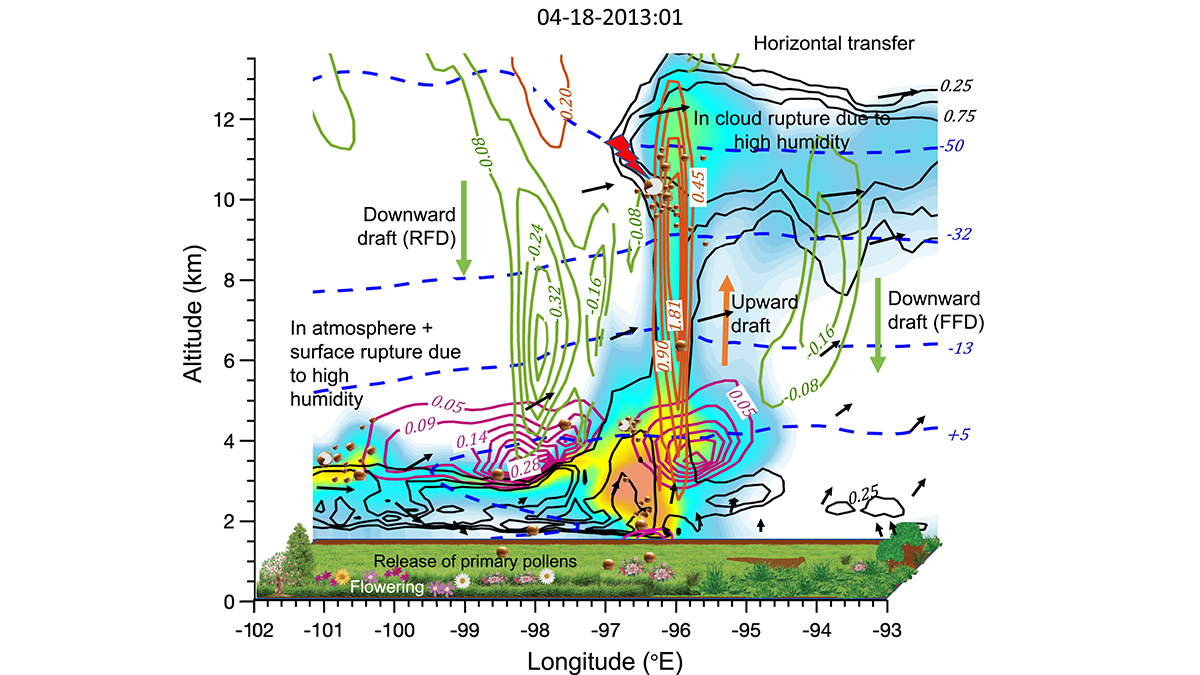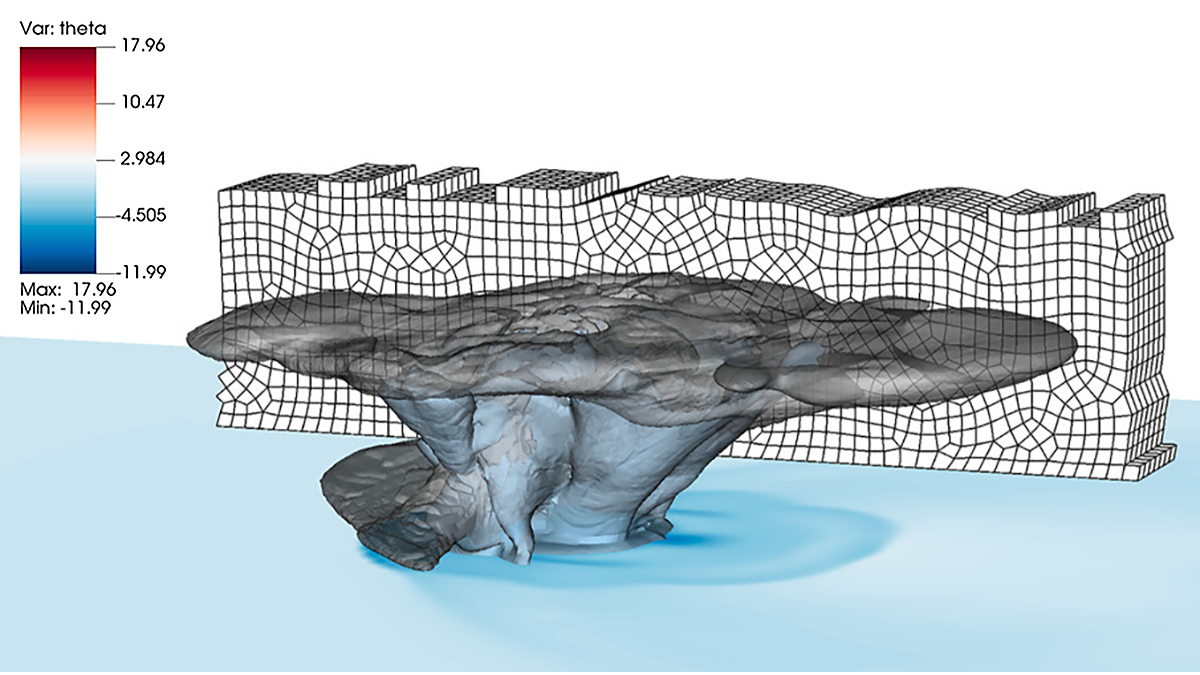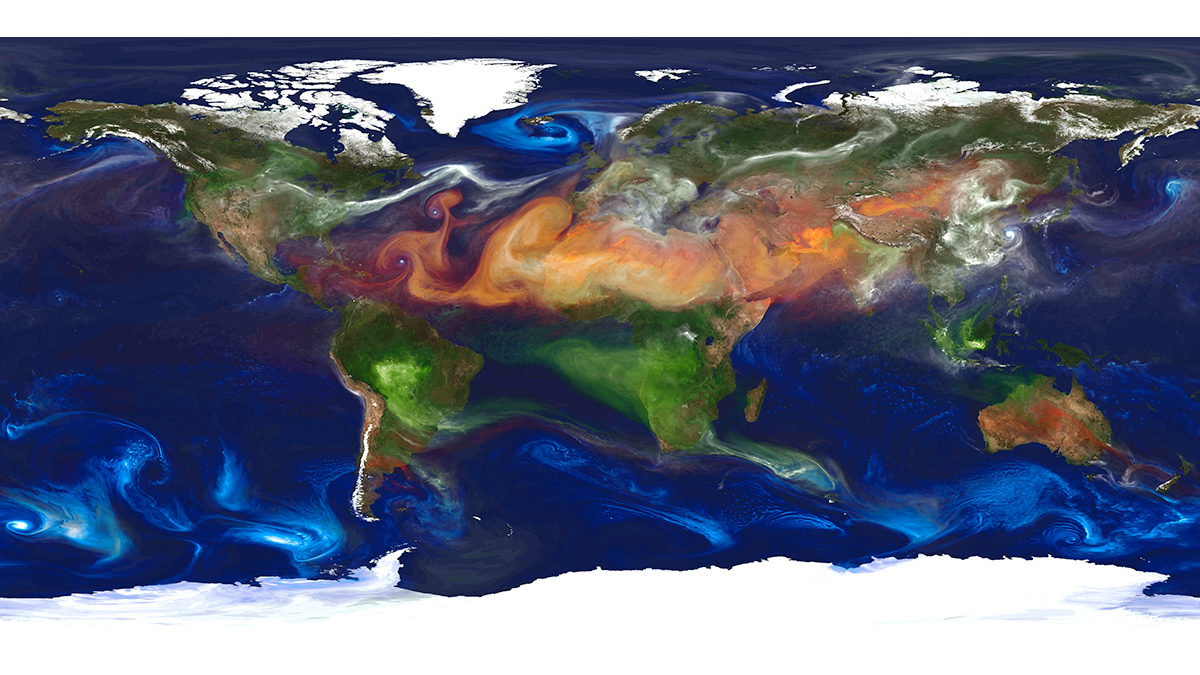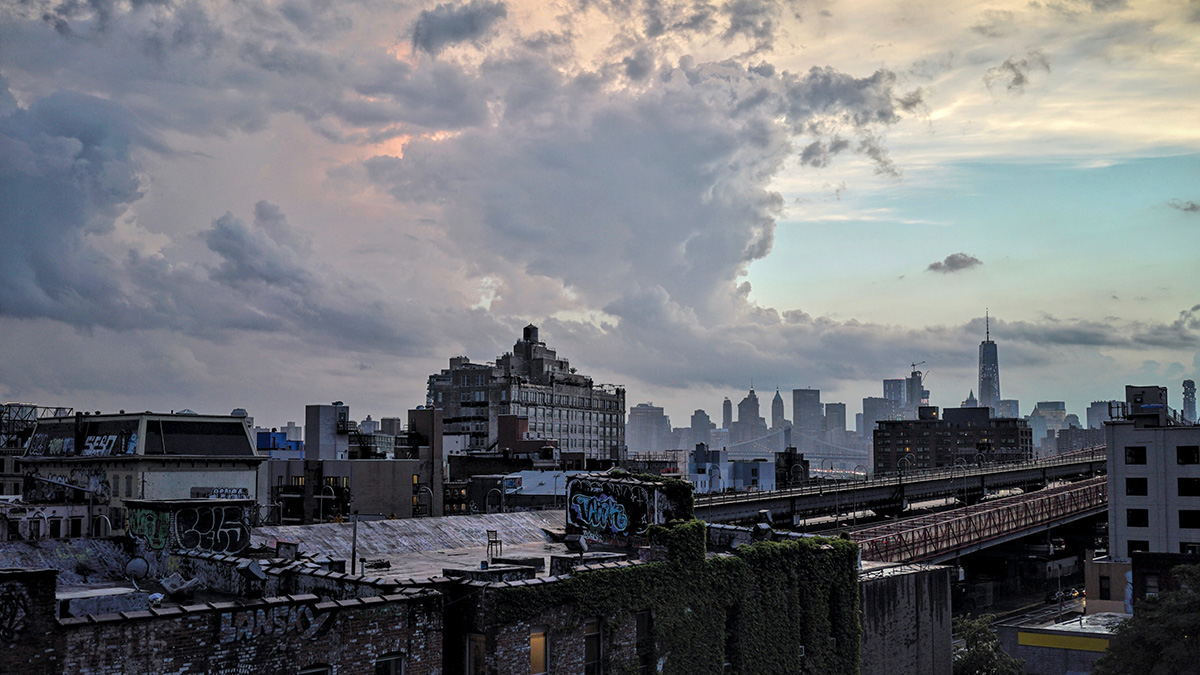On many exoplanets, conditions are so exotic that minerals form clouds and fall as rain. Recent studies revealed the rocky weather on these four exoplanets in more detail than ever before.
clouds
Cumulus Cloud Botany in Large Domains
A new study provides a sample of shallow cumulus clouds simulated in domains 150-kilometers wide, enabling investigations of their structure and organization.
Patterns of Surface Warming Matter for Climate Sensitivity
Location, location, location. Surface temperature patterns play a fundamental role in Earth’s energy budget.
Protein Powder Makes Ice Crystals Flower
Dust from Alaska is particularly effective at forming ice crystals because it contains biological components, researchers believe. The finding has implications for cloud physics and our planet’s climate.
Observing the Impact of Convective Aggregation on Water Vapor
Remote sensing measurements for water vapor isotopic composition enable us to assess how convective aggregation influences the atmospheric hydrological cycle.
Simulating the Journey of Pollen in the Atmosphere
A new study couples an emission and transport scheme of pollen from vegetation, and explores pollen’s evolution in different atmospheric conditions and its impacts on clouds and precipitation.
Simulating Clouds on Arbitrary Grids in Any Spatial Direction
A new non-column based spectral element implementation of cloud microphysics enables full 3D flexibility in computing clouds and improves computational efficiency.
Reducing Aerosol Climate-Forcing Uncertainty: A Three-Way Street
To reduce persistent aerosol-climate-forcing uncertainty, new in situ aerosol and cloud measurement programs are needed, plus much better integration of satellite and suborbital measurements with models.
Imágenes de satélite revelan que los paisajes urbanos generan nubes
Los cielos cubriendo las ciudades de los EE.UU. tienen más nubes que las áreas que las rodean.
New Theory Explains Radiative Cooling of the Lower Atmosphere
The shape of radiative cooling in lower atmosphere is controlled by the lapse rate in the water vapor path according to a new theory and observations from subsidence regimes in the tropical Atlantic.










